The eye-catching golden bootleg mushroom (Phaeolepiota aurea) has a long skirt around the top of the stem, which gives it a boot-like appearance. Between the skirt, the overall golden color, and the golden granules covering the stem and young cap, it is pretty distinctive. This species occurs across North America, but it isn’t super common. It is edible, with caveats. Please make sure you read the edibility section before consuming this species.
- Scientific Name: Phaeolepiota aurea
- Common Names: Golden bootleg, Golden cap, Gold cup, Golden false Pholiota, Velvet Top, and Alaskan gold.
- Habitat: On the ground in yards and near nettles
- Edibility: Questionable
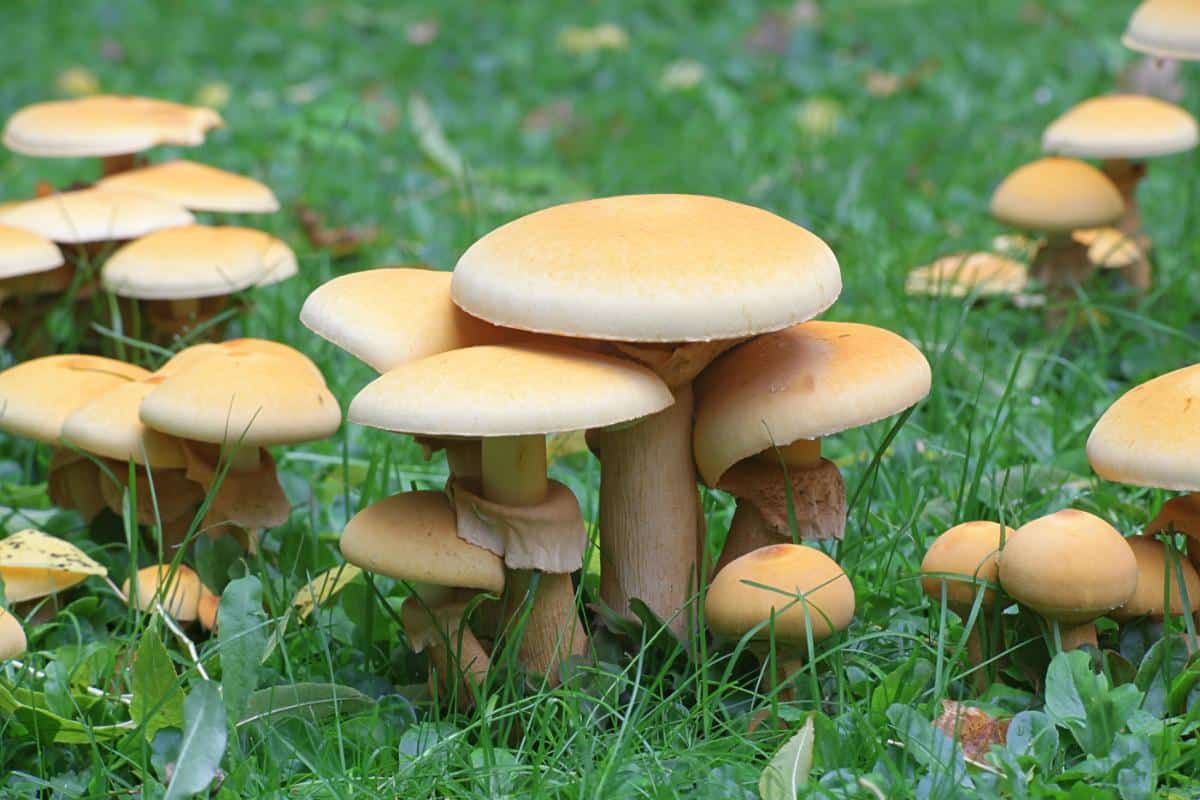

Jump to:
All About Golden Bootleg Mushrooms
The golden bootleg mushroom is not super common but is found throughout North America. It is very large, has a distinctive long brown skirt around the top of the stem, and looks like it is dusted with cinnamon sugar. It really stands out!
This mushroom species is the only member of its genus, though it may not be that way forever. There is still much debate as to where this species belongs or whether it makes sense to be the only one in its genus. Over the years, it has had at least 20 different names as it’s been moved around. Some synonyms include Cystoderma aureum, Pholiota spectabilis, Gymnopilus spectabilis, and Pholiota vahlii.
The Latin name Phaelepiota translates to dusky-scales, and the name aurea means golden-orange.
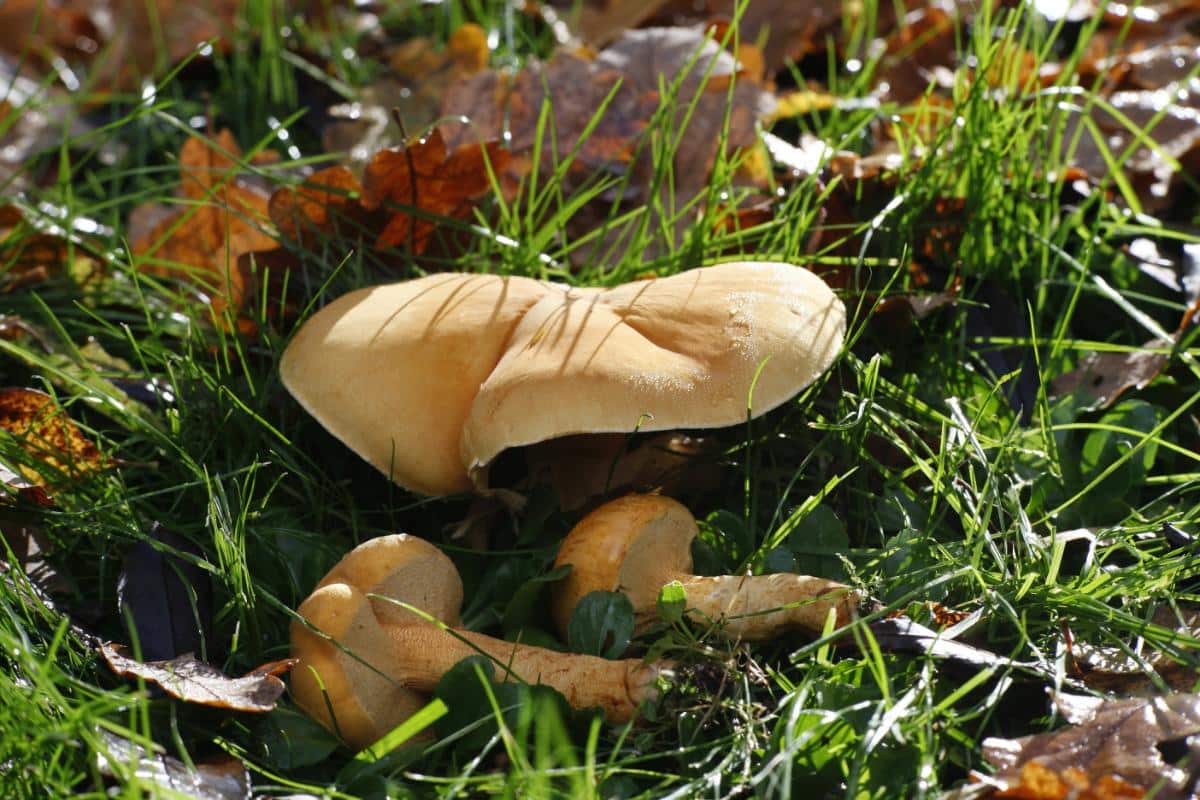
Golden Bootleg Mushroom Identification Guide
Season
Mid-summer through early fall.
Habitat
The golden bootleg is saprobic, feeding on rich organic matter in the soil. They often appear in large scattered or clustered groups on disturbed ground near deciduous and coniferous trees. They always grow from the ground, never from trees or on wood. These mushrooms love nutrient-dense areas like fertilized lawns and landscaped areas. They also seem to have a preference for nettles and frequently are found growing near them.

Identification
Cap
The cap is typically 8 to 20 inches in diameter and can reach an impressive 12 inches across. When young, the entire mushroom is covered by a sheath or sleeve. The sheath is golden-orange and covered in tiny granules, like soft sand. The sheath is usually more golden than orange and makes the mushroom stand out brightly.
As it matures, this sheath tears at the cap rim. The lower portion of the ripped sheath forms a substantial skirt around the stem. This unique feature makes it resemble a leg in a boot, which is how it got its common name.
The cap starts out rounded but flattens out with a small central bump as it ages. Its color ranges from orange-tan to golden brown. The cap has a dry, granular surface. It’s not uncommon to see bits of the veil fragments attached to the edge of the cap like a small fringe.
Gills
The gills are pale golden and crowded. The gills do not attach to the stem. Mixed in with the long gills are many shorter gills, some just an inch long, especially near the edges. The gills darken to orange-brown with age.
Stem
The stem is between 4 to 8 inches tall and about 1 inch across. It is club-shaped (it increases in diameter towards the base). Above the skirt, the stem is smooth and glossy. It is also a lighter color than the cap. Below the skirt, the stem is vertically lined (or grooved) and covered in light sand-like or powdery granules.
Flesh, Taste, and Odor
The flesh is light yellow. Golden bootleg mushrooms smell like bitter almonds and taste slightly sweet.
Spore Print
The spore print is yellow-brown.
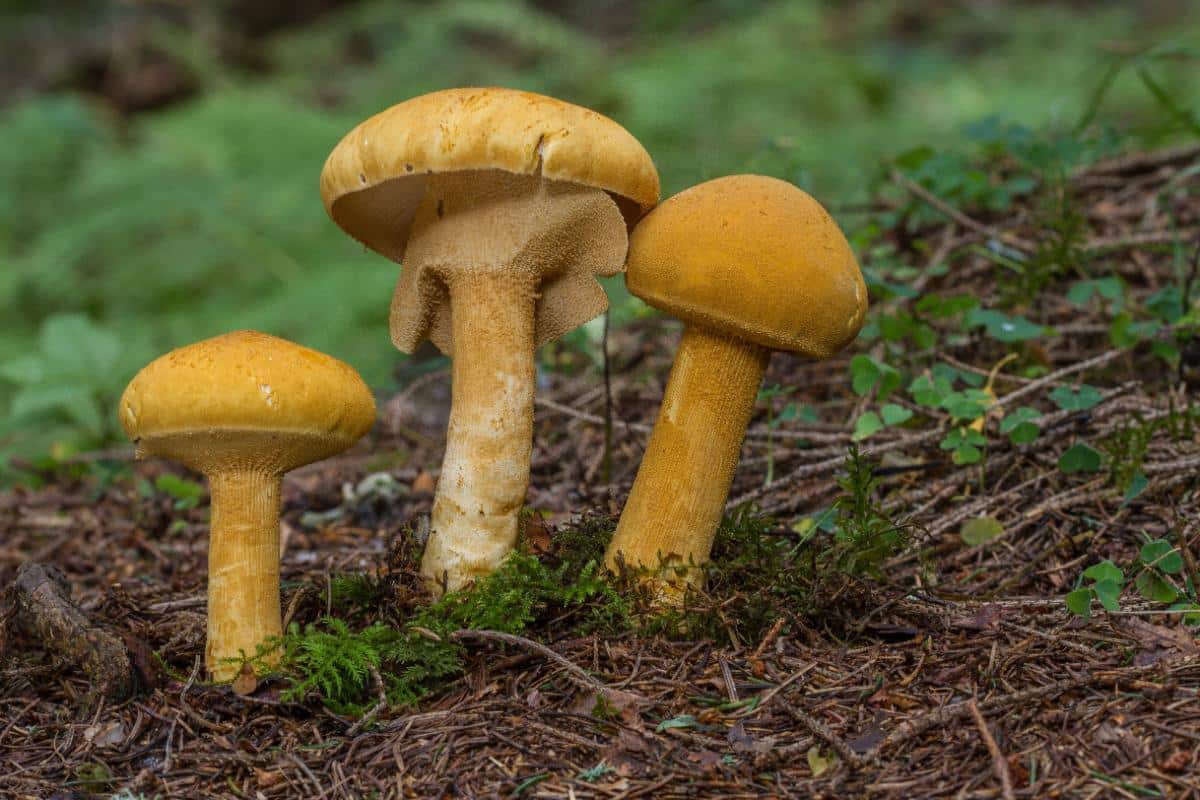
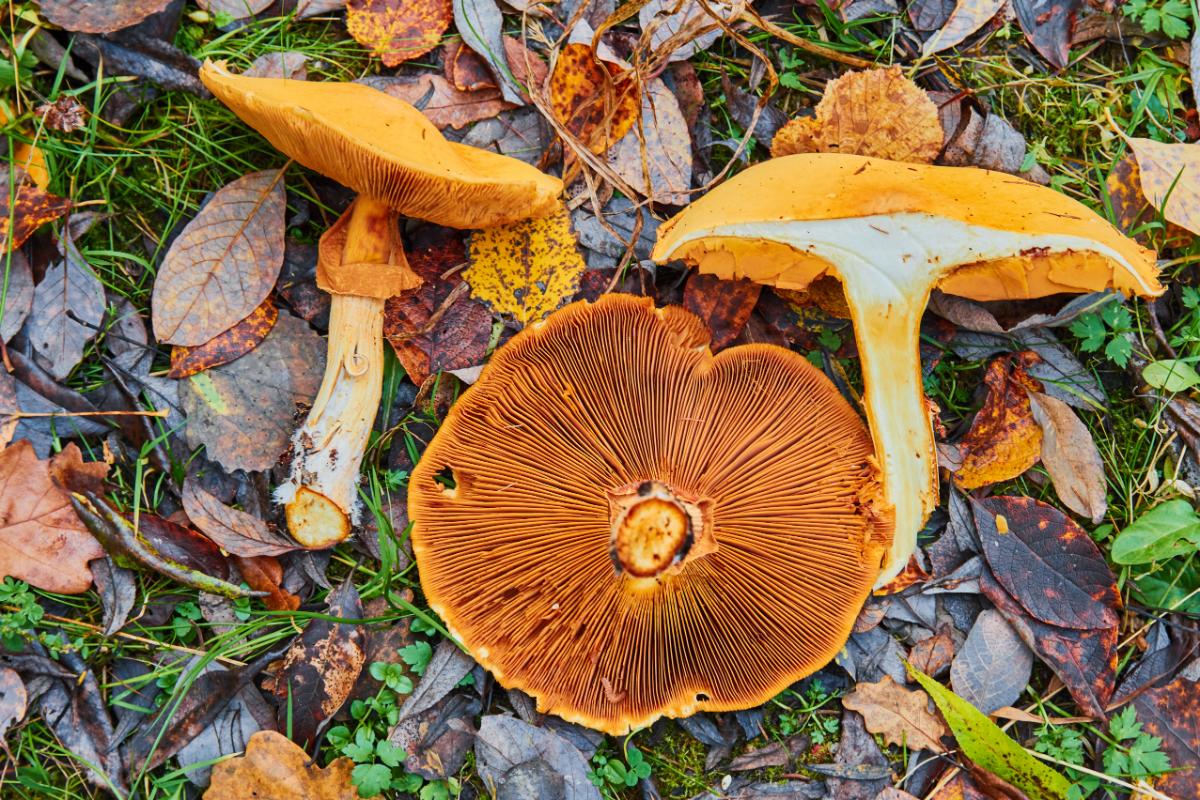


Golden Bootleg Mushroom Lookalikes
Spectacular Rustgill (Gymnopilus junonius/Gymnopilus spectabilis species complex)
The spectacular rustgill, aka Big Laughing Gym, looks so much like the golden bootleg that they are very often confused. Much of that is because the spectacular rustgill is pretty common, while the golden bootleg mushroom is uncommon. So, folks just assume they’ve found “the usual” spectacular rustgill.
Both these are large golden-orange-brown mushrooms with a vertically lined stem and brown skirt around the upper portion of the stem. There are several key differences, though, that easily separate these two species. The spectacular rustgill is not covered with fine golden granules on the stem or anywhere else. It also grows from wood, not from the ground.
So, to be sure of which you’ve found, check where it is growing (you might have to dig for buried rotting wood) and look for the cinnamon super sand dusting.
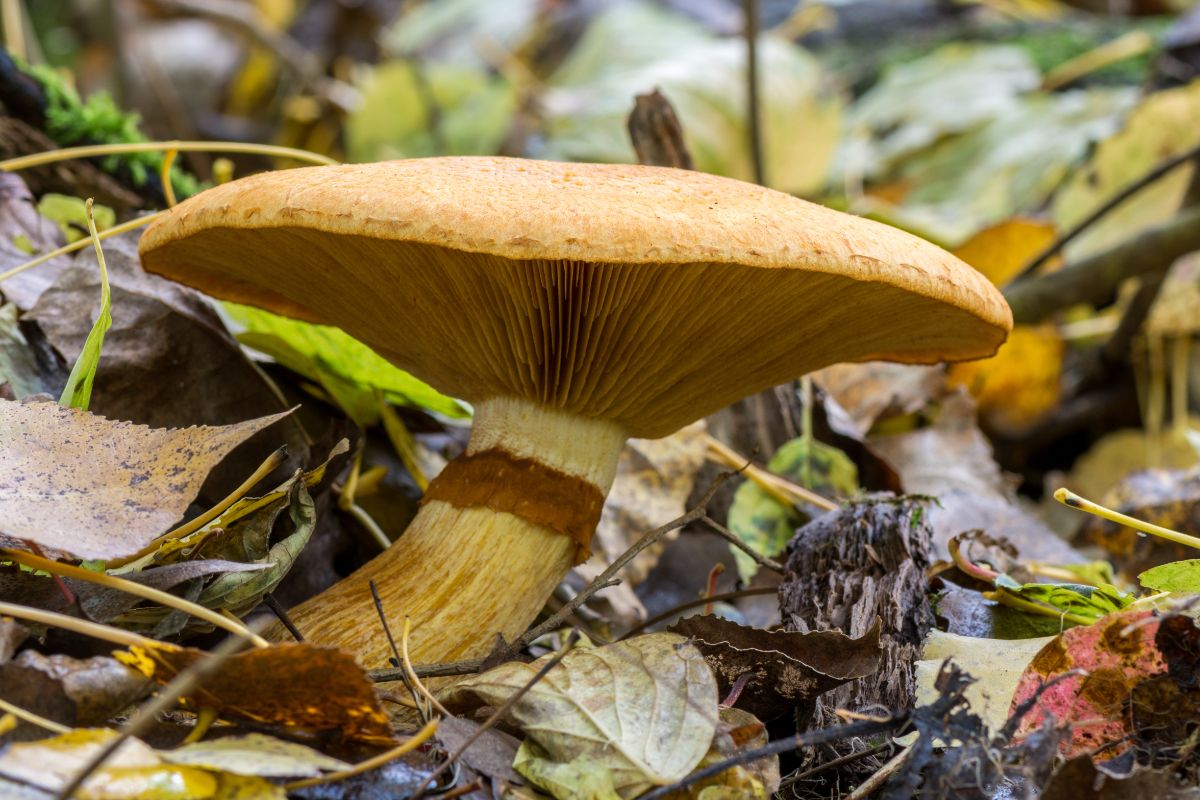
The Earthy Powdercap (Cystoderma amianthinum)
This lookalike mushroom is much smaller, reaching only 2 inches across compared to the golden bootleg mushroom’s potential 20″ wide cap. In other ways, it looks very similar, though. The caps are orange-brown, the cap edges have veil fragment fringes, and the stem is covered in flaky scales. It often has a ring around the stem, but it disappears pretty quickly, so that’s another key difference. Like the golden bootleg, this mushroom grows in yards and other grassy areas.
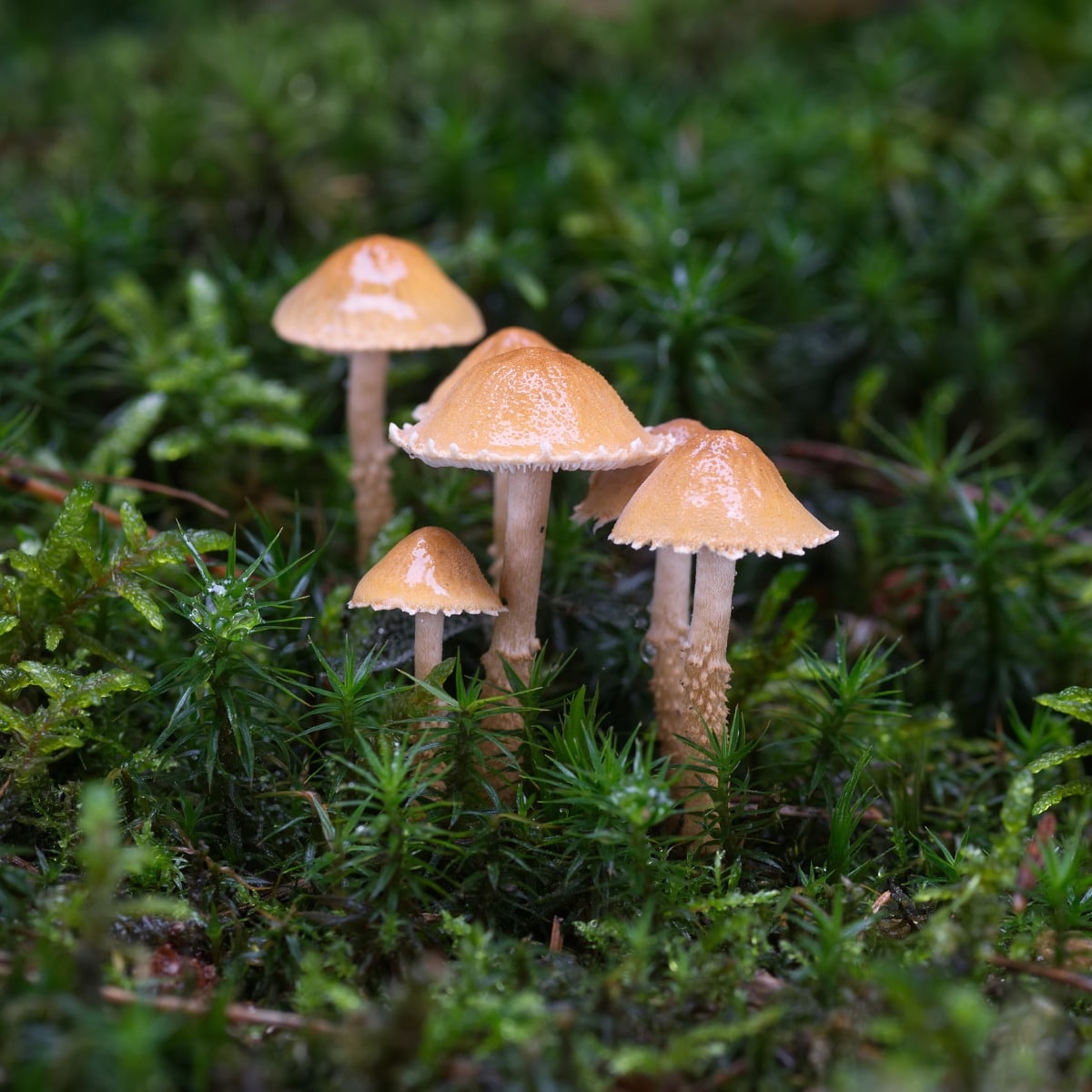
Golden Bootleg Mushroom Edibility
In Russia and China, this species is considered edible and has been collected and eaten for centuries. However, recent studies show that it contains cyanide and cadmium components, which is troublesome. The cyanide concentration is reduced with cooking but not entirely eliminated.
In addition to containing toxic compounds, the golden bootleg is also known to cause severe gastrointestinal distress for some people. Whether the cyanide or cadmium are the cause of this is unknown.
Many other natural foods contain cyanide compounds, and we do eat them. A lot probably depends on the concentrations. To learn more about these cyanogenic glycosides, check out this review: A Review of Cyanogenic Glycosides in Edible Plants.

Common Questions About Golden Bootleg Mushrooms
Is the golden bootleg mushroom edible?
This mushroom contains cyanide and cadmium and is not recommended for the table. However, it is foraged and eaten in some countries — the cyanide amounts are reduced during cooking but not eliminated entirely.


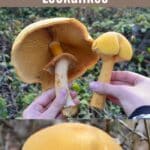

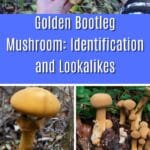





Leave a Reply